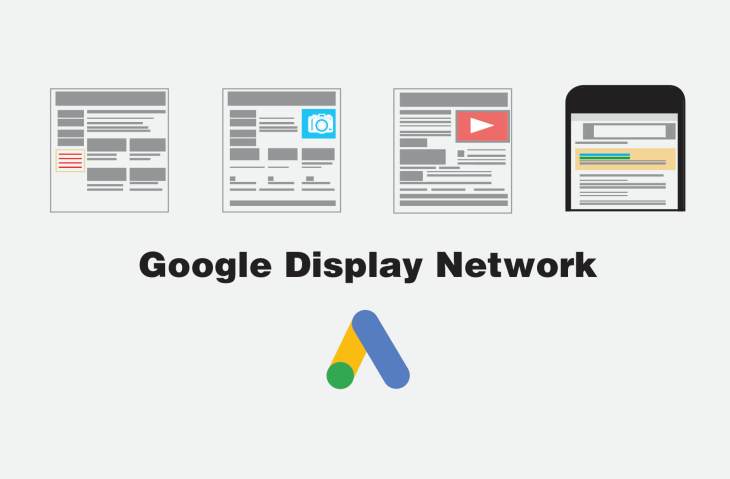Targeting customers on the Google Display Network (GDN) can be a phenomenal way to increase brand awareness, website traffic and even boost your bottom line. However, there are some differences between display advertising and search advertising that leads marketers to struggle with targeting on the GDN.
This guide will focus on providing some beginner tips on how to target customers with the Google Display Network.
Site-Based Versus User-Based Targeting
When you advertise on the search network, keywords are your primary targeting method. You can refine this targeting by time, device type, location, etc. On the Display Network, however, you have way more targeting options. It can actually be a little overwhelming when you first get started.
To alleviate this confusion, try and think of display targets as either user-based or site-based.
A site based target means that you’re trying to find websites with the same audience as your business and its products/services. Then, you place ads on these sites that appear in front of all users that visit those pages.
User-based targeting is what advertisers are typically more familiar with. These targeting options look at specific audience criteria to try and find users that fit the ideal customer profile. Then, target those users across any websites they happen to visit.
What Is Google Display Network And How Do You Create An Optimized Display Campaign?
Types Of Targeting Options
Here is a quick overview of some of the popular targeting options on the Google Display Network. Every one of these options can be grouped as either a site-based targeting option, or user-based one.
Managed Placements
This is the most popular site-based targeting option. All you need to do is enter a website profile that fits your business and your targeting set up is done. You can even choose to refine targeting by choosing exact pages on a site that you want to include or exclude in your targeting.
If you want to get the most from your managed placements, use a third-party tool to measure domain and page traffic for sites you visit. This will help you target websites with lots of visitors!
Topic Targeting
Topic targeting allows you to choose subjects that are relevant to your products and services. Then, it finds web pages that are discussing topics and ideas about that subject or closely related to it. Some advertisers find this better than managed placements because it is easier to find pages that directly relate to your business.
Topics must fall under Google’s designated categories and subcategories. That said, there are over 25 main categories and each one contains multiple subcategories. You should have no problem finding topics that connect to your business!
Keyword Contextual Targeting
If you’re more comfortable swimming in the pool of keyword targeting, this may be the option for you. This is also a great targeting choice if you don’t find the right topics in Google’s defined categories.
Instead of targeting topics, you can create a keyword list and then Google will match your ads to pages that include these keywords in the content. Or, at least have contextually similar content on that page. For instance, Google knows that if you select the keyword “modern interior design,” that you are also interested in content discussing modern furniture and decor trends.
Remarketing
A lot of marketers come to the Google Display Network specifically for remarketing. This is a powerful, user-based approach that aims to serve ads to people that have already visited your site in the past. This strategy is excellent at keeping brand recall high and encouraging return visits.
You can further customize your remarketing targets based on which pages they’ve visited on your website. This allows you to target different ads to different customer segments. You can target one ad to customers that have yet to purchase, and a different ad to loyal customers that have purchased multiple times. Alternatively, you can target ads to customers based on which products they browsed during their visit.
Similar Audiences
If remarketing has paid off for you, then similar audiences is a great targeting feature to use next. It looks for signals in users’ browsing data (what sites they’ve visited, searches made, topics they are interested in, etc.) to find people that fit the same audience profile as your remarketing targets. It’s an easy way to expand your audience!
In-Market Audiences
The in-market audience feature also uses the browsing data of Google users. The difference here is that the data isn’t used to find similar audiences. Instead, it is used to find people that are “in market” for your business’ offerings. This means people that are actively searching for and likely to purchase (or subscribe, sign up, schedule, etc.) a product/service. For example, someone that is constantly searching, “new homes to buy in my area,” is very much in the market to buy a new home.
In-market audiences are extremely valuable because they are on the brink of purchasing. They have very high conversion rates and don’t require much retargeting or other efforts to get through the funnel.
Interests
While in-market audience targeting is a great option for reaching customers at the end of the buying cycle, what about targeting prospects just entering the funnel? Interest targeting aims to place ads in front of audiences that are just starting to browse sites and search topics related to your business.
For some businesses, interest-level audiences are extremely valuable. You’re getting someone that is just entering the space and wants to get started with novice or beginner-level products. If you can capture this conversion, you not only create a sale, but also the opportunity to make a lifetime customer.
Affinity
The difference between interest and affinity is really the length of time that an audience member has been interested in the topic at hand. While “Interests” targeting is about finding audiences just getting started with a new topic, “Affinity” targeting looks for people with longstanding interest in the area.
Demographics
The last way to target users is through demographics. Demographics can be used in layers to find an ideal customer audience. Demographics include the ages, gender, parental status and household income of potential customers. By using some or all of these options, you can really zero in on a specific profile.
Conclusions
Targeting with the Google Display Network can be a little much because there are so many options to choose from. However, when you break each option down into a simple explanation, it becomes a lot clearer which options are best suited for what types of ad campaigns.







